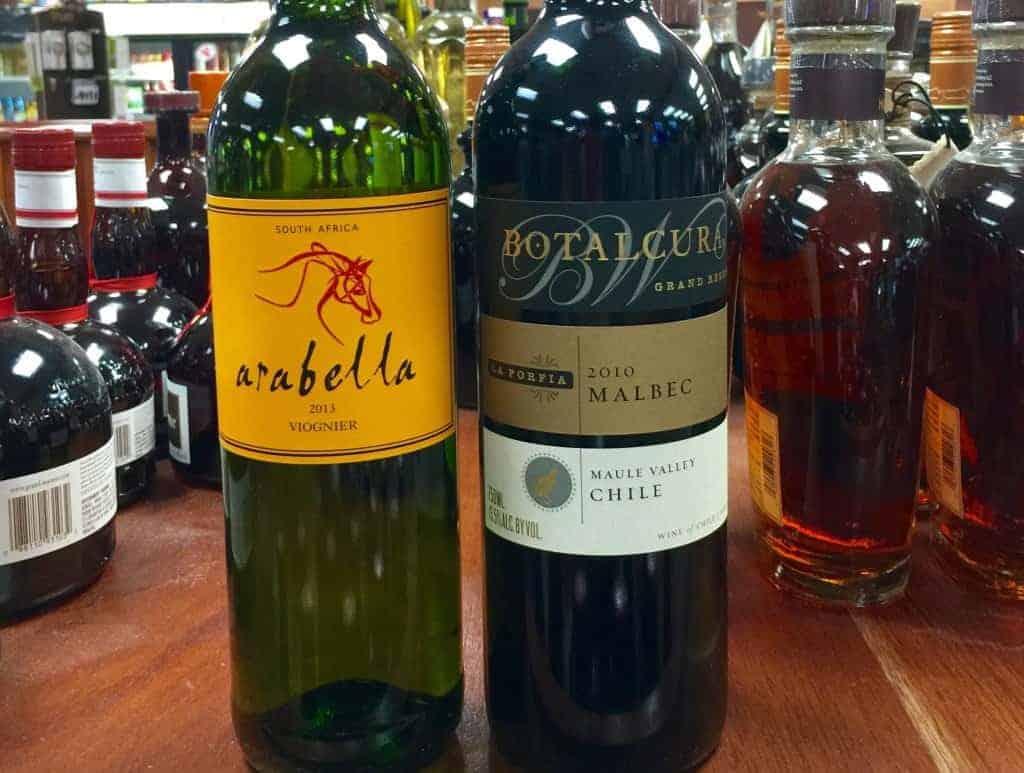We’ve got some hand picked selections of beer and wine just for you to taste when you join us at our store tonight between 4-6PM. We’ll be having this event at our front tasting bar.
Arabella Viognier 2013
Soil Types
The vineyards are planted on the floor of what was, many millions of years ago, a great inland lake. Evidence of this lake can be seen in the massive water washed boulders. As the rainfall declined the lake dried up leaving a deposit of calcareous silt many meters thick. The drying of the soil and the effect of the elements cured the top layer of this calcareous silt into rock hard calcium carbonate. At first it was thought that these soils were only suitable for pastures as the roots of orchards and vineyards could not penetrate the calcium carbonate. The era of the big machine, which could rip through the hard calcium carbonate to a depth of 1.5 meters to access the calcareous silt underneath, changed this perception. Vineyards now flourish and produce wonderful wine where there once was arid veldt. A near perfect viticultural terroir has been created where man can manipulate conditions as he sees fit.
Clonal / Rootstock Selection
Two rootstocks are used, 101-14 and Richter 110. Some of the older vines were planted with 101-14, but it has become apparent that our soils are more suited to Richter 110. The problem with 101-14 is that it has a shallow root structure and is more prone to suffer from water stress at the critical ripening periods. Conversely, Richter 110 has a stronger root structure which enables us to better control deficit water management in the period before veraison.
Growing Season Growing Data (October – April)
Rainfall: 333.7mm
Mean Maximum Temperatures: 24.95°C
Mean Minimum Temperatures: 10.27°C
Vine Age: 4 years
Pruning Regime: Cordon/Spur Pruned, Vertical Shoot Positioning
The Harvest:
Harvest Date: 15 February
Yield Per Vine: (weighted average) 2.7 kg
Yield Per HA: (weighted average) 8 tonnes
Maturity Analysis at Harvest (weighted averages): Brix: 25°
Viognier is picked mid February and in the very early morning (at first light) by hand so as to keep the berries whole and thus reducing the chances of oxidation on route to the winery.
In the Cellar:
Once crushed the wine is cooled though mash cooler and then pumped into an airbag press with a central inflatable membrane. The entire outer cylinder of the press has drainage holes to speed up the process of pressing, increase the amount of juice extracted and reduce oxidation. Once pressed the juice is again put though a plate cooler.
Blend Information:
100% Viognier
<(‘.'<) <(‘.’)> (>’.’)>
2010 Botalcura ‘Gran Reserva’
Maule Valley, Chile Malbec
Boltacura Winery takes its name from a small Chilean village, and the story behind the village’s name. Botalcura is situated about three hours south of the capital city of Santiago, and about an hour northeast of Talca. It’s set amongst rolling hills, and its name means “large stone” in Mapundungun, the language of Chile’s native Mapuche people.
As winemaker Philippe Debrus explains, “Something hard and solid as rock speaks of the power of the gods and what’s enduring. Both of these ideas come together in the wines of Botalcura — the indomitable yet generous power of nature, the source of intense and concentrated vines, combines with the certainty of transcending time, of making time an ally that will bear out in the excellence of the wines.”
Botalcura’s 2010 “Gran Reserva” Malbec delivers Debrus’ vision with balance, finesse and freshness, as it seamlessly melds the nuances of fruit, earth and oak with rock-solid results.
Grape Composition: Aging Vessels:
100% Malbec Select Oak Barrels
Grape Source: When to Drink:
Maule Valley Growing
Area of Chile
Now Through 2015
Aromas and Flavors: Our Tasting Panel Score:
Eucalypus, Black Cherry,
Blackberry, Chocolate,
Cocoa, Nuts and Vanilla
91 Points
This fresh, well-balanced wine offers notes of eucalyptus, black cherry, blackberry,
chocolate, cocoa, nuts and vanilla.
FOOD PAIRING SUGGESTIONS: grilled lamb, or braised rabbit.
<(‘.'<) <(‘.’)> (>’.’)>
Rook & Vuur
Stout & Porter-ish (Smoked Stout)
Alcohol 8.2
Plato 18.0
Ingredients: Water. Pale, chocolate, smoked, caramel and roasted barley malts. Sladek bitter and late hop. Yeast (top fermenting).
Description: Rook & Vuur is a subtle balance between smoke, chocolate and chili peppers. Although it has a large complexity it is still surprisingly easy to drink. Try combining this beer with a young Gouda cheese and treat yourself. Flavor indication: Chocolate, chili, smoke Translates as Smoke & Fire.
<(‘.'<) <(‘.’)> (>’.’)>
Mooi & Meedogenloos
Stout & Porter-ish (Quadruple)
Alcohol 10.2
Plato 21.0
Ingredients: Water. Pale, chocolate and caramel barley malts. Premiant and saaz bitter hop. Yeast (top fermenting).
Description: Mooi & Meedogenloos combines both Belgian style Quadruple and Imperial Stout. Sweet and spicy like the first but roasted and full bodied like the second.
Flavour indication: chocolate, plums, brown sugar Translates as Beautiful & Ruthless.
<(‘.'<) <(‘.’)> (>’.’)>
Slaapmutske Tripel (Night Cap)
Alc. vol.: 8,1 % ABV
Color: 15.00 EBC
Bitterness: 35 EBU
Density: 16 ° Plato
Slaapmutske Tripel is a golden blond high fermentation beer with secondary fermentation in the bottle. For brewing this beer of 8.1% Vol uses pilsner malt and malt color. The fresh aroma and spicy, bitter taste is obtained by the use of two strong aromatic hop varieties. The finish is malty and resulting in a pleasantly soft bitter hopmondgevoel. The fermentation creates a fine sparkling effervescence that maintains the compact firm head.


